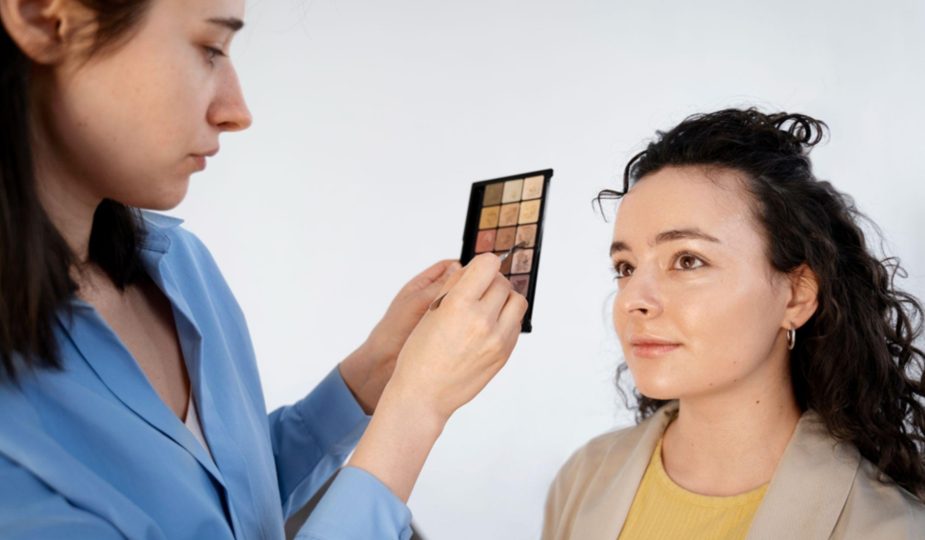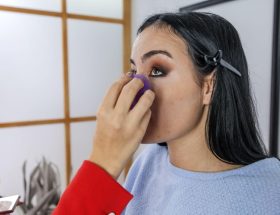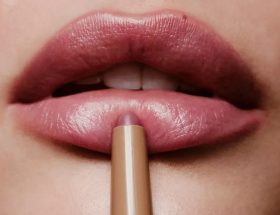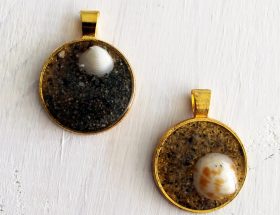A good foundation is key to any makeup look, creating a radiant and smooth base. But the wrong foundation can lead to a cakey appearance, dryness, or breakouts. Here’s a guide to finding the perfect foundation for your skin type:
What is Foundation?
Foundation is a cosmetic product used as a base for makeup. It comes in liquid, powder, cream, or stick form and helps to hide imperfections, even out skin tone, and provide a smooth finish. Foundations can also protect your skin and offer benefits like hydration, oil control, or sun protection.
Step 1: Know Your Skin Type
-
Normal Skin: Balanced skin texture. You can use any type of foundation – liquid, cream, powder, or stick. Look for a formula that provides a natural glow without being too drying or greasy.
-
Beauty Tip: Hydrating foundations have a dewy, satin effect. Lightweight, buildable formulas allow you to control coverage.
-
-
Oily Skin: Shiny surfaces, especially in the T-zone. Choose an oil-free, mattifying foundation to control shine.
-
Beauty Tip: Look for foundations labeled “oil-free” or “matte.” Powder or liquid foundations that absorb oil are great.
-
-
Dry Skin: Tight and scaly skin, with prominent fine lines. Opt for a moisturizing foundation to smooth out dryness.
-
Beauty Tip: Hydrating foundations with hyaluronic acid or glycerin will hydrate the skin and give it a smooth, fresh look.
-
-
Combination Skin: Oily T-zone with dry cheeks. Look for a foundation that controls oil without drying out the skin.
-
Beauty Tip: Try a multi-purpose, buildable foundation that’s neither too matte nor too hydrating.
-
-
Sensitive Skin: Prone to redness and irritation. Choose a non-comedogenic, fragrance-free formula without parabens or harsh chemicals.
-
Beauty Tip: Look for foundations with soothing ingredients like aloe vera, chamomile, or calendula. Mineral foundations are also a good choice.
-
Step 2: Determine Your Skin Tone and Undertone
-
Skin Tone: The overall shade of your skin. Categories include:
-
Fair: Pale and burns easily.
-
Medium: Olive-colored, tans easily.
-
Deep: Rich tones.
Choose a foundation shade that closely matches your natural skin color. Test shades around the jawline or neck to see how they blend.
-
-
Undertone: The subtle colors beneath the skin’s surface. Types include:
-
Cool: Pink, red, or blue undertones. Choose a foundation with a pink or blue base.
-
Warm: Yellow, golden, or peach undertones. Choose a foundation with a yellow or golden base.
-
Neutral: Equal ratio of warm and cool tones. You can wear either yellow or pink-based foundations.
-
-
How to Determine Your Undertone:
-
Vein Test: Blue/purple veins indicate cool undertones; green veins indicate warm undertones; a mix indicates neutral undertones.
-
Jewelry Test: Silver complements cool undertones; gold complements warm undertones; both look good on neutral undertones.
-
Step 3: Select the Correct Foundation Type
-
Liquid Foundation: Versatile for most skin types. Available in matte, dewy, and satin finishes. Offers medium to full coverage.
-
Beauty Tip: Use a matte finish for oily skin and a hydrating liquid foundation with a dewy finish for dry skin.
-
-
Powder Foundation: Great for a light, natural look or for oily skin. Buildable coverage.
-
Beauty Tip: If your skin is dry, apply a hydrating primer or moisturizer first.
-
-
Cream Foundation: Full coverage with a rich texture. Suitable for normal or dry skin. Provides moisturizing qualities and a dewy finish.
-
Beauty Tip: Apply with a makeup sponge or foundation brush for a flawless look.
-
-
Stick Foundation: Portable with medium to full coverage. Natural matte finish.
-
Beauty Tip: Best for combination and oily skin. Hydrate the face first if applying to dry skin.
-
-
Mineral Foundation: Suitable for sensitive or acne-prone skin. Contains natural ingredients and provides buildable coverage.
-
Beauty Tip: Perfect for light to medium coverage. Apply with a fluffy brush for an airbrushed finish.
-
Step 4: Test the Foundation
-
Try on Your Jawline or Neck: Test shades on your jawline or neck, not your wrist or hand.
-
Let the Foundation Set: Apply a small amount and let it dry to see how it oxidizes and mixes with your skin’s natural oils.
-
Check in Natural Light: Inspect the foundation in daylight to avoid color distortion from artificial light.
Step 5: Final Tips to Choose the Best Foundation
-
Know Your Coverage Needs: Determine whether you want light, natural coverage or medium to full coverage.
-
Think About Your Skin’s Needs: Choose a foundation with skincare benefits, such as anti-acne ingredients, SPF, or anti-aging ingredients.
-
Always Blend: Use proper tools like sponges, brushes, or fingers to blend the foundation into the skin.
Conclusion
Choosing the right foundation depends on your skin type, tone, undertone, and desired coverage. By understanding your skin and following these tips, you can find the perfect foundation to enhance your natural beauty and boost your confidence.










